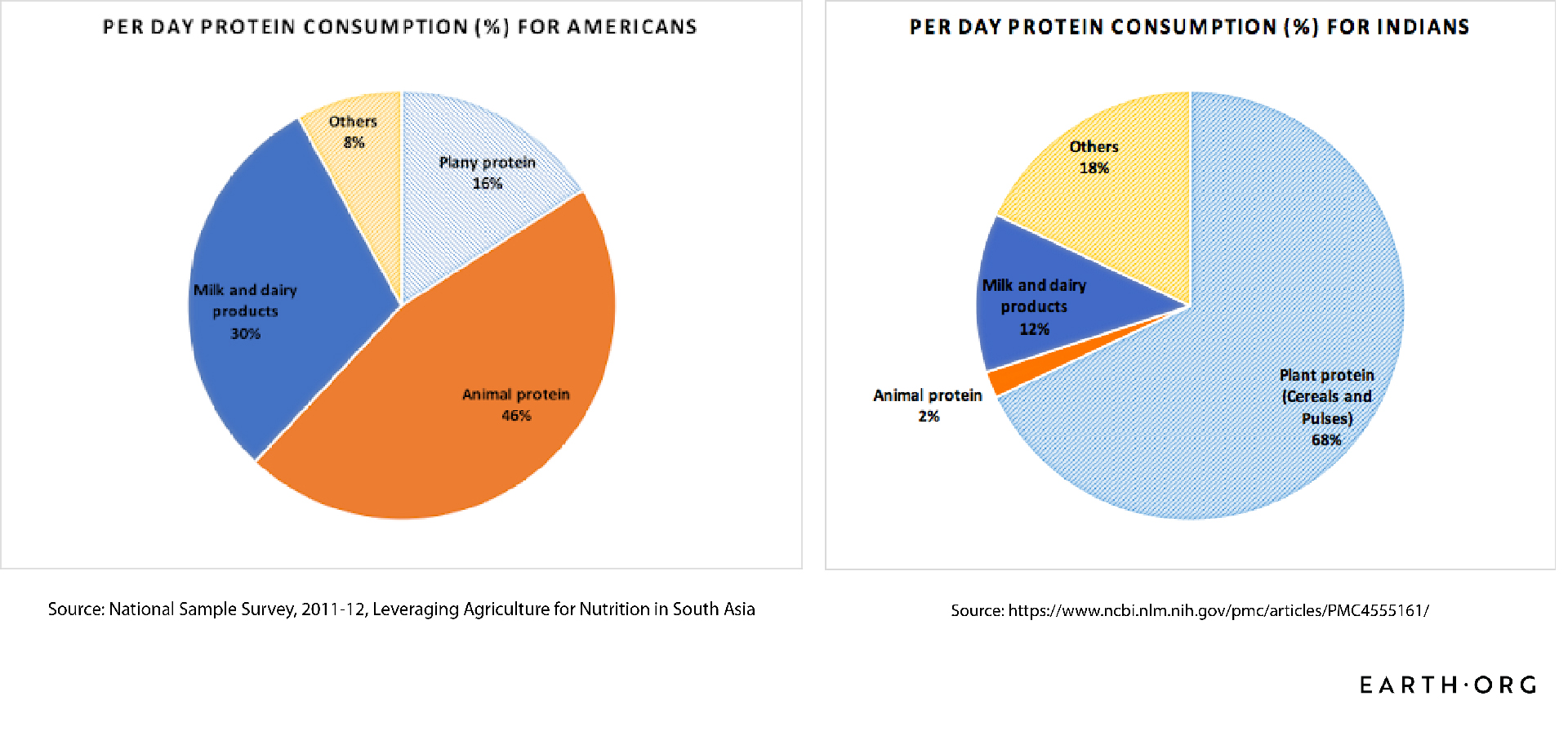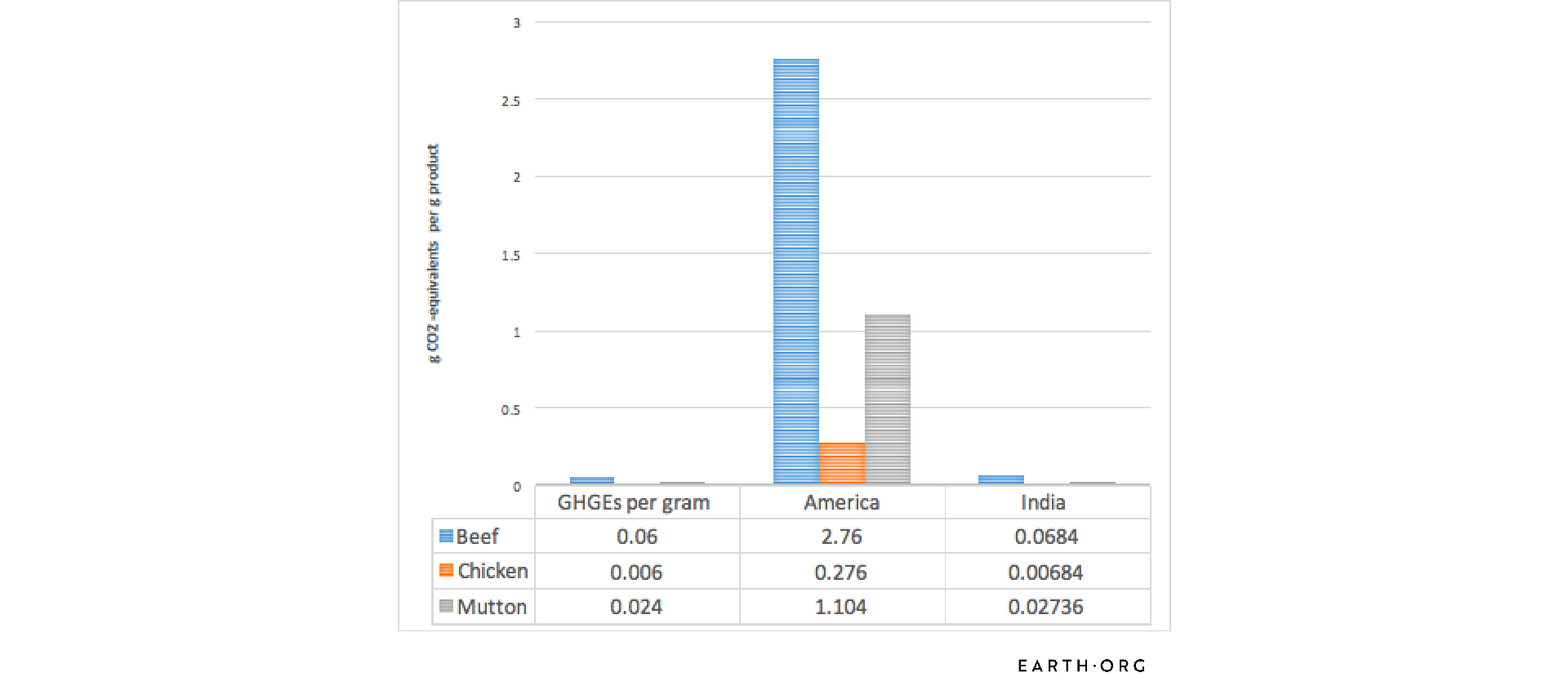We’ve come to understand that food production is responsible for 26% of the world’s greenhouse gas emissions (GHGEs). It is safe to say that people have become more aware of the impacts their diet and food choices bring. Here, we put that focus on America as the truth about the Standard American Diet may be sadder than its abbreviation, SAD, in terms of nutritional qualities and environmental friendliness.
—
Despite being one of the wealthiest countries in the world, the longevity of Americans ranks behind most developed Asian countries, Europe and Cuba. In the past two decades, its place on the chart has dropped from 11th to 45th in 2020. Apart from deaths caused by drug abuse and suicides, non-communicable diseases like overweight and obesity, are the major contributors to such negative trends. According to a study in 2015, on average an American consumes around 2,900 calories everyday, which is 400 to 900 calories more than the WHO recommendation. Considering more than half the calories (around 63%) come from nutrition-void food, it’s no wonder that there is a 72% obesity rate in the country.
On top of the health issues, the SAD poses an equal amount of threats to our environment. It is a known fact that GHGEs coming from animal-based foods are far higher than plant-based ones. An average American man consumes around 100 g of proteins a day, which is double the suggested amount; and about two-thirds of that protein comes from meat and dairy products. These two food groups account for nearly 85% of GHGEs and 90% of the agricultural land use associated with the average American diet. It has been estimated that food purchases account for 16% of the country’s GHGEs; and as one of the top CO2 emission countries, around 5.41 gigaton in 2018, it is not hard to imagine the excess amount of GHGs coming from this pattern of consuming proteins. Alarmingly, there have been signs that diets similar to SAD are becoming more common in developing countries.
Many low- and middle- income countries struggle with so-called “dual burden” of obesity and malnutrition. Although malnutrition persists to be a concern in many places, number of people who are overweight and obese is rising sharply according to a study in 2017. Globalization is said to be a major reason as it speeds up “nutrition transition”, a term for the obesity-inducing shift from traditional to western diets that come along with modernisation and wealth. The growing availability in low-price, high calories food, increase in wealth and urbanization have resulted in a rise of premature deaths caused by non-communicable diseases (NCDs). NCDs are diet-related chronic diseases, which contribute 88% of all deaths in America in 2016.
However, we can’t put a stop on the advancements of developing countries in fear of climate change. The big question here is how much more GHGs would be there if these countries were to eat like the Americans?
To answer this question in a simpler manner, we conduct a case study answering the following question: what if India’s population began eating like that of the US? are using India as our country of comparison, as it is a developing country whose CO2 emissions are ranked 3rd in the world; and focusing on the consumption of animal proteins.
The thing you notice first is that the two countries are polar opposites for daily protein sources. Indians mainly consume plant protein such as cereals (including rice, wheat, millets, etc) and pulses; while Americans mostly pick animal protein. There is also a huge gap between the amount of daily protein intake. The average Indian consumes half (57g) the amount of daily protein an American does. The figure below compares the amounts of animal protein consumed by Indians vs. Americans.

To put things into climate change perspective, we use a modified version of a chart that illustrates total GHGEs (across the whole supply chain) of individual food products. To demonstrate the excessiveness and extremeness of SAD, we compare beef and chicken consumption in the US and India.

Despite having a much smaller population than India’s, the US emissions from it’s staple meats is massive. If Indians switched to a similar diet, there would be a shocking 3900% increase in GHGEs from global animal protein consumption.
This article was written by Wing Ki Leung.
You might also like: Disequilibrium in Antarctica










![The Statistics of Biodiversity Loss [2020 WWF Report]](https://u4d2z7k9.rocketcdn.me/wp-content/uploads/2020/12/lprwinkyTHB-544x306.jpg)





